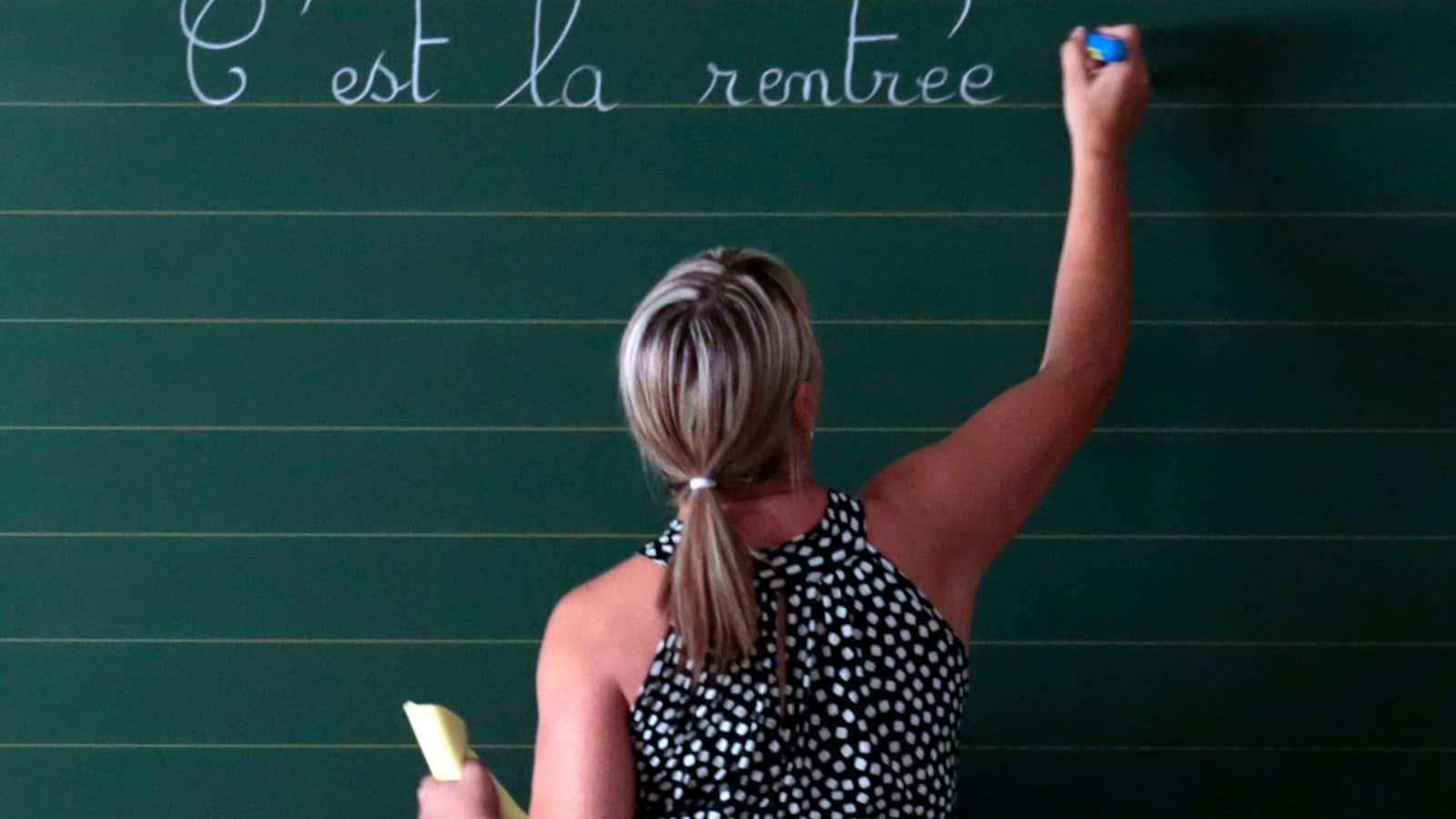A recent analysis by the Pew Research Center found that 16% US public elementary and secondary school teachers supplement their income with a non-school summer job. But the percentage is much higher for younger, newer teachers.
Nearly a third (32%) of teachers with one year or less of teaching experience had a non-school job during the summer before the 2015-16 school year, along with 20% of teachers with two to four years of experience, and 17% of teachers with five to nine years of experience.
That means more than a quarter (26%) of teachers under 30 worked another job during the summer, versus 16% of those ages 30-39, 14% of those 40-49, and 12% of those 50 and older.
It’s worth noting that younger teachers are less likely than their older colleagues to have children or other family obligations, allowing them for more flexibility in their work schedule. But teachers overall are about three times as likely as the average US worker to balance multiple jobs, according to the US Bureau of Labor Statistics (BLS). And like the summer numbers, a similar same share of teachers (18%) had second jobs during the 2015-16 school year, according to the National Center for Education Statistics (NCES). They’re working as baristas, Amazon warehouse employees, window washers, and fast-food grill cooks.
Teachers in the United States—across pre-school, primary, secondary, and special education—earn on average $58,780 annually, according to the BLS. But those salaries vary widely by state, and by tenure.
The second job helps pay the bills (or, in some cases, teachers’ out-of-pocket expenses for school supplies). On average, teachers’ summer job earnings account for 7% of their total annual income, according to NCES data. For those in the first year of teaching, the money earned during the summer amounted to 12% of their annual earnings.
Pew also found differences by gender: During the school year, roughly a quarter (26%) of male teachers held a second job, versus 15% of female teachers. The pattern was similar during the summer, when 24% of male teachers had a second job, versus 13% of female teachers. That stands in contrast with the US as a whole—similar shares of employed women and men worked two jobs in 2015 and 2016, according to the BLS.
Notably, Pew reports that trends in teachers’ non-school employment—regardless of age, gender, teaching experience—have remained consistent since 2007, when the NCES began separating out jobs held over the summer versus during the school year. Perhaps the reason so many teachers hold second jobs has less to do with overall economic conditions and more to do with how little they’re paid to work in the classroom.
